|
The material on this website is intended for educational use only and may not be reproduced for commercial purposes without express permission from the appropriate copyright holder.
Le contenu de ce site Web est destiné à des fins pédagogiques seulement et ne peut être reproduit à des fins commerciales à moins d'en avoir obtenu la permission du titulaire du droit d'auteur approprié.

Aztec drawing of victims of measles, 16th century
"There came amongst us a great sickness, a general plague. It began in the month of Tepeilhuitl. It raged amongst us, killing vast numbers of people. It covered many all over with sores: on the face, on the head, on the chest, everywhere.
It was devastating . . . Nobody could move himself, nor turn his head, nor flex any part of the body. The sores were so terrible that the victims could not lie face down, nor on their backs, nor move from one side to the other. And when they tried to move even a little, they cried out in agony. . .
Many died of the disease, and many others died merely of hunger. They starved to death because there was no one alive to care for them . . .Many had their faces ravaged; sthey were pockmarked, they were pitted for life. Others lost their sight, they became blind."
Florentine Codex, 1550, Ronald Wright, Stolen Continents

Aztec drawing of victims of measles, 16th century, Wikimedia Commons
"Scarcely had those unfortunate Aborginals proceded one days march from the Forts when they were attacked with the Measles which disease proved fatal to great numbers of them . . . This dreadful disease as well as the Whooping Cough prevailedduring the greatest part of the Winter among all the different tribes of Indians who trade with us at this District and proved equally fatal to all."
Edmonton District Report, Hudson's Bay Company, 1819-20

Robert Cruikshank, 1840?

Smallpox, Historical, poetical and pictoral American scenes, 1850
[MORTAL SICKNESS AMONG THE INDIANS:
Colonists introduced European diseases such as smallpox, chicken pox, measles, whooping cough, cholera, scarlet fever, mumps, tuberculosis, influenza and typhus, among First Nations. Lacking immunity to such diseases wave after wave of epidemics drastically reduced the number of First Nations people living in North America.]
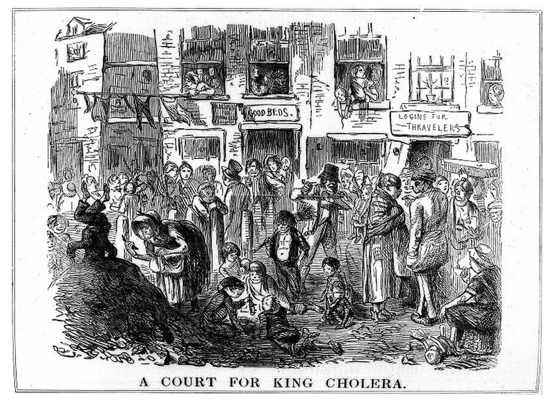
Punch, London, UK, 25 September 1852

Smallpox epidemic, April 1862- fall 1863.
"In over the 18 month that began in April of 1862, at least half and perhaps well over half of all the people living in B.C. – most of them first nations – perished in a single event .
During the Spanish Flu pandemic of 1918, . . . the mortality rate in Canada was 6.1 per cent. That is, about six of every 100 people who were infected with the flu virus died. . . . The mortality rate for the 1862 smallpox epidemic was greater than 60 per cent. . .
Anglican Bishop George Hills visited the Haida and Heiltsuk camps. The sick, burning with fever, threw themselves into the sea. The helpless dying lay packed together. The stench was intolerable. 'I have never witnessed such horrible scenes of death, misery, filth and suffering before,' Hill later wrote. . .
These mass deaths tore irreparable holes in the cultural fabric of societies in which oral traditions were the custodians of the genealogies, laws, histories and literature of entire peoples.
And then settlers moved in to occupy apparently vacant lands in some of the richest regions of the province . . .
Those momentous events . . . shaped the B.C. that we inhabit. Their aftershocks continue to shudder through the political and social bedrock of our present in the form of unresolved land claims, inadequate reserve lands as populations finally rebound from their nadir a century ago, and the legacy of marginalized and impoverished communities that have been alienated from resources and are frequently blamed for their impoverishment."
Stephen Hume, "Titanic disasters, selective memories," The Vancouver Sun,
25 April 2012.
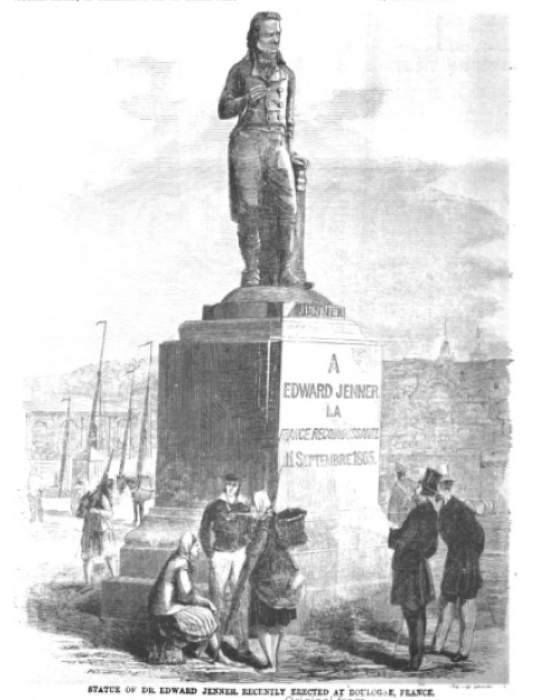
Harper's Weekly, New York, 4 November 1865
[Edward Jenner was well known for his innovative contribution to immunization and the ultimate eradication of smallpox. In 18th century in Europe 400,000 people died annually of smallpox, and one third of the survivors went blind].
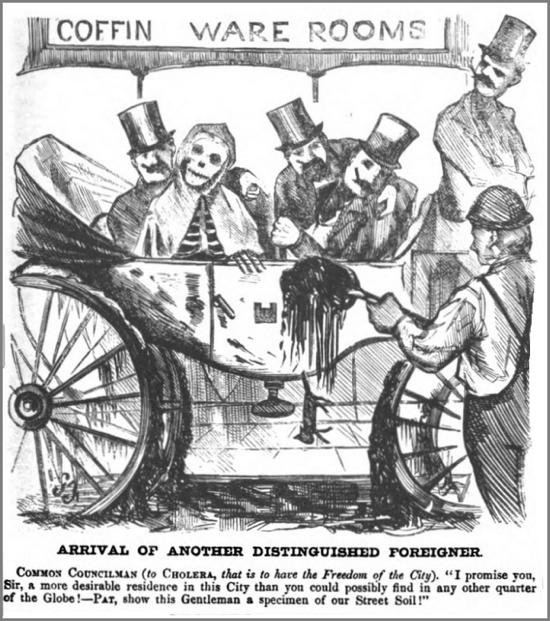
Harper's Weekly, New York, 11 November 1865

CHOLERA AND QUEBEC
Cholera: Let’s mark that door. We will think about it next spring, these Quebecers are good people. They know how to have fun and amuse their friends, as a foreigner I will have a good reception. Braves Quebecquois, laugh, sing, drink, your life smiles on me. Wait for me, I still have a lot of work to do in Europe, I will come with the shandon or the first ship that will visit your port when the next navigation opens.
Choir of the pleasure seekers,
Another stroke,
To bring us back to reason,
We are good! We are good! We are good!
La scie illustrée, Québec, 28 November 1865

Cholera, Fun Magazine, artist George John Pinwell,, 18 August 1866
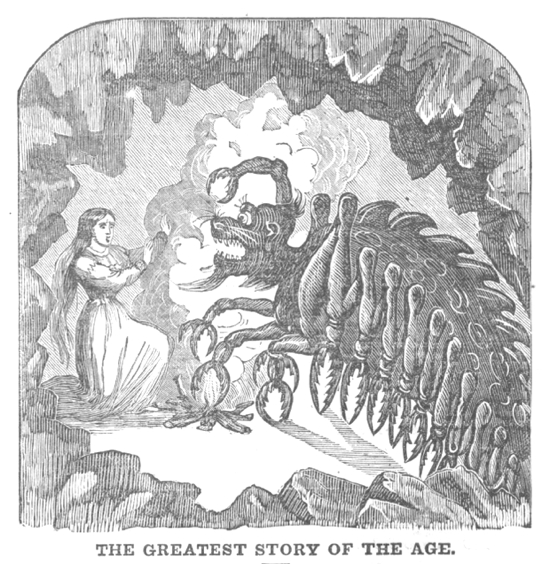
Harper's Weekly, New York, 1 February 1867

Harper's Weekly, New York, 23 April 1870

Harper's Weekly, New York, 2 January 1871

Harper's Weekly, New York, 12 July 1873

MONTREAL'S NIGHT-MAYOR ON HIS GHASTLY ROUNDS.
(Dedicated to the Board of Health) [artist Henri Julien]

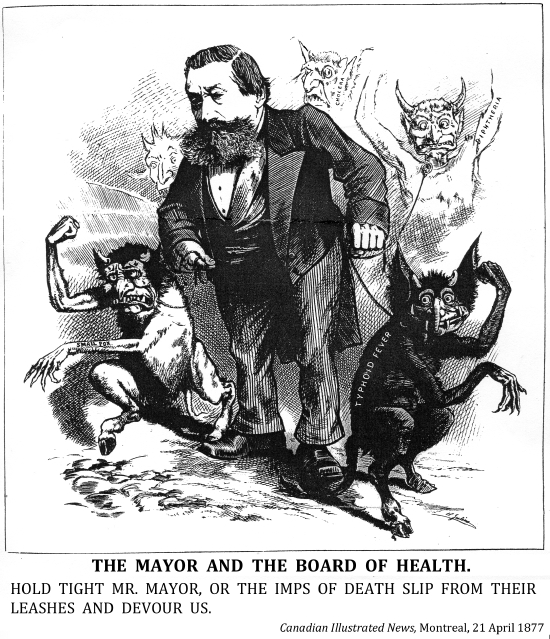

Postcard, 1778?, [Edward Jenner was well known around the world for his innovative contribution to immunization and the ultimate eradication of smallpox.]

Arrival of the smallpox in Montreal. The monster appeared. The women caress him and attack the health officers who want to chase him away.
Le vrai canard, Montréal, 20 August 1881

2 August 1882, George Frederick Keller Wikimedia Commons

Puck, New York, 24 July 1883
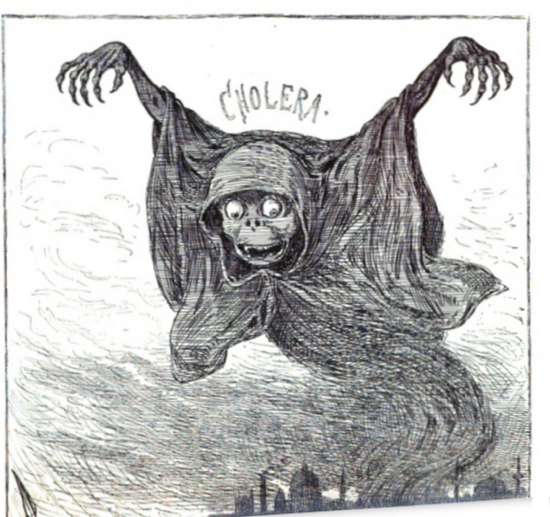
Life, New York, 2 August 1883

How cholera is spread in Montreal. Notice to the health unit.
Le grognard, Montréal, 4 August 1883

Robert Goldthorpe Brooks, 1884
[Chief Crowfoot with a group of children. In two years of the photograph being taken, all nine children, some of whom were his own, had died of tuberculosis.]

Frank Leslie's Illustrated Newspaper, 20 June 1885
[In 1885 Montreal had a serious problem with the disposal of garbage. Piles of offal from slaughterhouses, overflowing privy pits, rotten vegetables and fish, dead animals and manure often went uncollected. In the spring the smell alone was deadly. Many people thought that there was a connection with cholera and infectious diseases such as smallpox.
Michael Bliss, Plague: A Story of Smallpox in Montreal]

Montreal, 29 September 1885


Montréal – Scenes en face de L'Hotel de Ville, par les anti-vaccinateurs, dans la soire du 18 Septembre, Montréal Weekly Witness, 30 September 1885
[Canada – the anti-vaccination riots at Montreal – attack on the city hall by a mob of French Canadians, September – Frank Leslie's Illustrated Newspaper, 10 October 1885]

Frank Leslie's Illustrated Newspaper, New York, 10 October 1885
Canada – The Smallpox Epidemic at Montreal – The Volunteer Nurses – The Grey Nuns

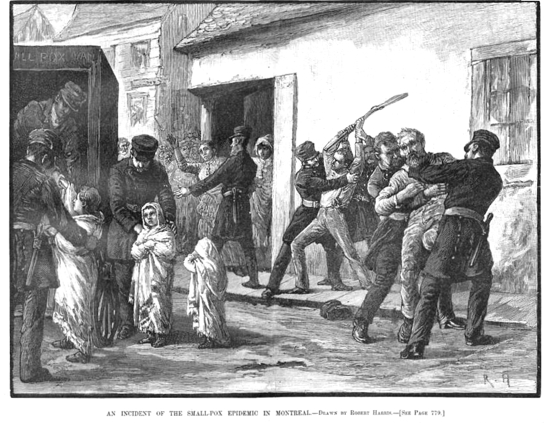
Police used force to remove smallpox patients from the public.
Harper's Weekly, sketch by Robert Harris, 28 November 1885, Public domain, via Wikimedia Commons

J. W. Bengough, Grip, Toronto, 12 December 1885

Canada – The Recent Smallpox Epidemic in Montreal – Vaccinating American-bound Passengers on a train of the Grand Trunk Pacific
Frank Leslie's Illustrated Newspaper, 26 December 1885, Wikimedia Commons

Life, New York, 6 October 1892
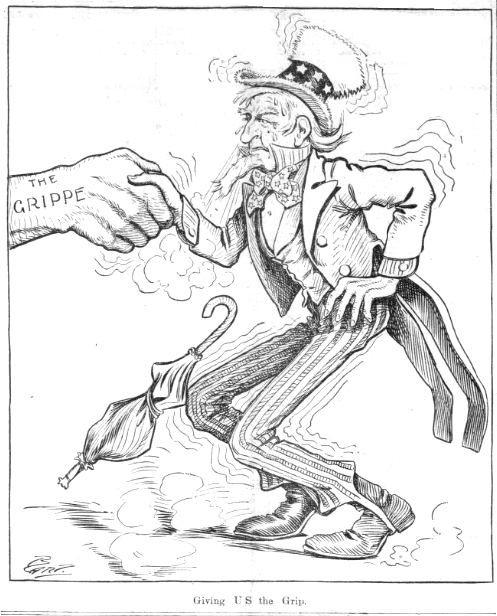
[Influenza]
The Minneapolis Journal, Minn. 14 January 1901

Postcard, 22 February 1906, Community Archives, Public domain, via Wikimedia Commons
[A woman at college writes about being quarantined for smallpox.]

Metropolitan Magazine, New York, April 1909
%201866-1933%20artist%20Public%20domain%20via%20Wikimedia%20Commons.jpg)
Germ proof (vaccination), Puck, artist Glackens, L. M. (Louis M.), 8 December 1909, Public domain, via Wikimedia Commons

Woman with smallpox, LAC a181559-v6


Illinois State Board of Health, Springfield, 1911

The Daily Telegraph and Daily Witness, Montreal, 1912

Van Leshout, Louisville Courier Journal, reprinted in Cartoons Magazine, Chicago, February 1914

Life, New York, 18 November 1915

Being Inoculated. Wikimedia Commons, 1918?
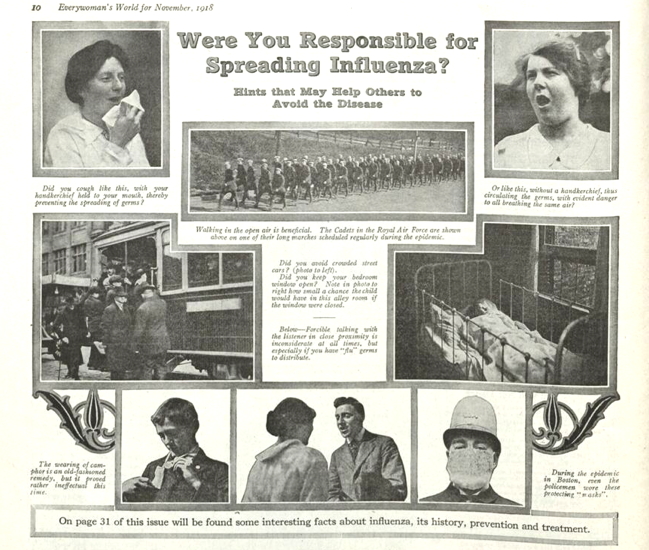
"Fight the Flu!", 1918, BC Archives I-61504

Influenza, Everywoman's World, Toronto, November 1918

Spanish flu, 4 November 1918, LAC a025025

Holiday Shopping 1918 Pandemic, Public Domain, via Wikimedia Commons

Flu ward at the Vancouver General Hospital Heather Annex, known as the 'emergency flu barn, erected to cope withthe outbreak of Spanish influenza, Vancouver Public Library

May be work of U.S. Public Health Service, 1918 via Wikimedia Commons

.jpg)
Winnipeg Tribune, 4 November 1918
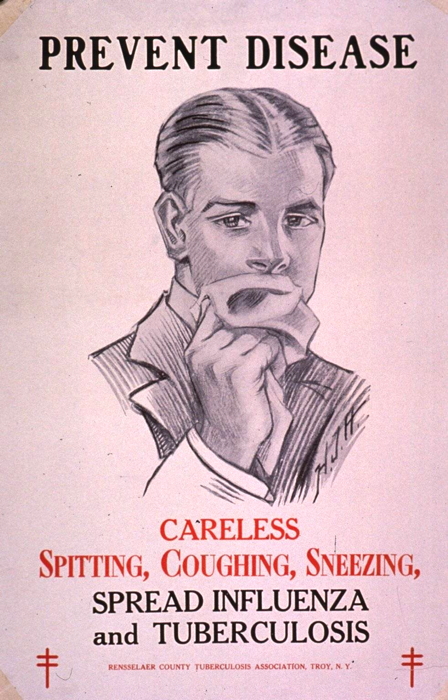
Poster, 1918, Rensselaer County Tuberculosis Association, Troy, N.Y., Public domain, via Wikimedia Commons

Spanish flu victims burial North River Labrador, 1918, photographer not named, Public domain, via Wikimedia Commons

%20%20%20William%20James%20City%20of%20Toronto%20Archives%20via%20Wikimedia%20commons.jpg)
Rally of the Anti-Vaccination League of Canada (measles), 13 November 1919, William James City of Toronto Archives via Wikimedia Commons.

Camion Cartoons, Kirkland Hart Day, 1919, Public domain, via Wikimedia Commons

Food and tuberculosis, Library of Congress, Public domain, via Wikimedia Commons

Open air schools and tuberculosis, Library of Congress, Public domain, via Wikimedia Commons

Tuberculosis is a "House Disease", National Child Welfare Association, New York, LC2014647541


Life, New York 1 March 1923

South Dakota Public Health Bulletin, July 1924


American Public Health Association

Russell T. Limbach, Health and Disease, April 1936


1938 typhoid fever



Tuberculosis is a "House Disease", National Child Welfare Association, New York, LC2014647541


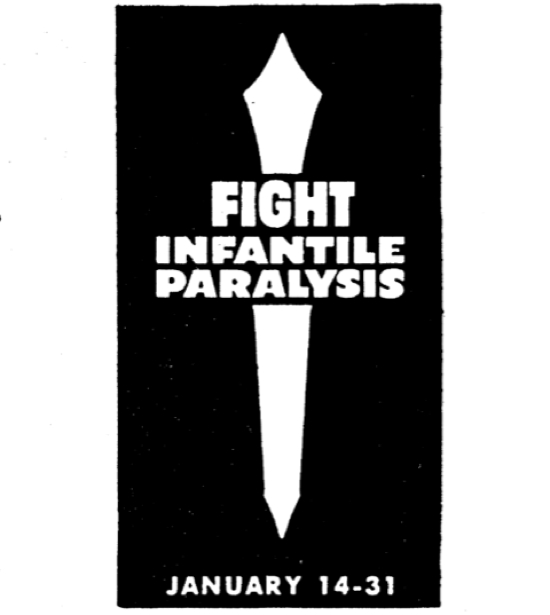
New Masses, New York, 23 January 1945


"Immunization - Saves Lives" National Archives at College Park, Public domain, via Wikimedia Commons


Veneral disease , LAC c127795k-v8

John Collins, Montreal Gazette, 18 April 1946
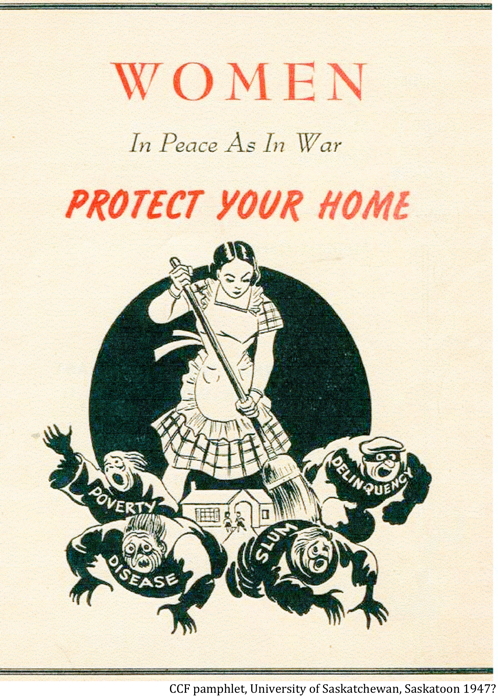

Varsity, Toronto, 24 January 1949

Charles R. Knight, The Windsor Daily Star, 21 January 1954

Queen's Journal, Kingston, 25 January 1954
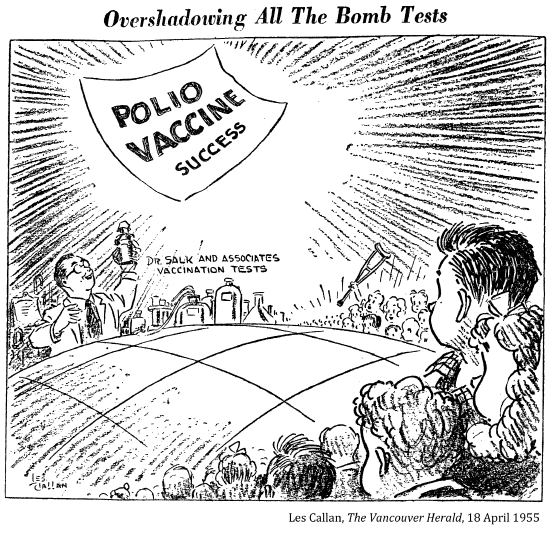

Free Polio Vaccine, The last thing to worry about is the cost.
Canadian Hungarian Worker, Vancouver, 21 April 1955

Jim Berryman, Washington Star, National Archives Identifier, 5743204, 18 May 1955
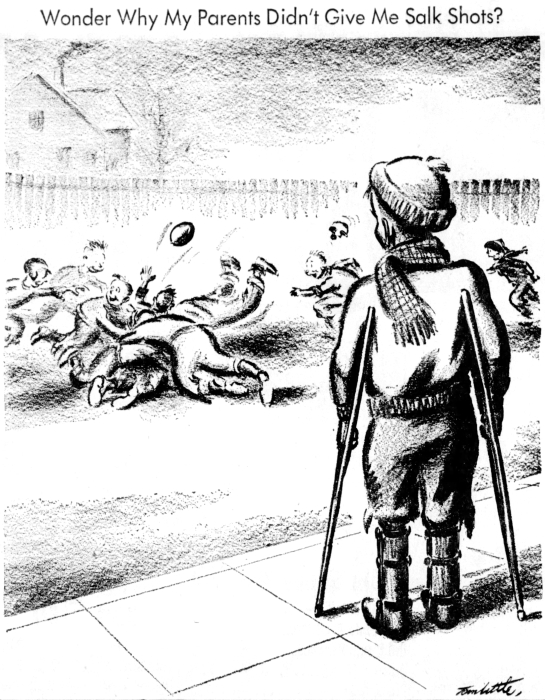
The Nashville Tennessean, artist Tom Little, Public domain, via Wikimedia Commons
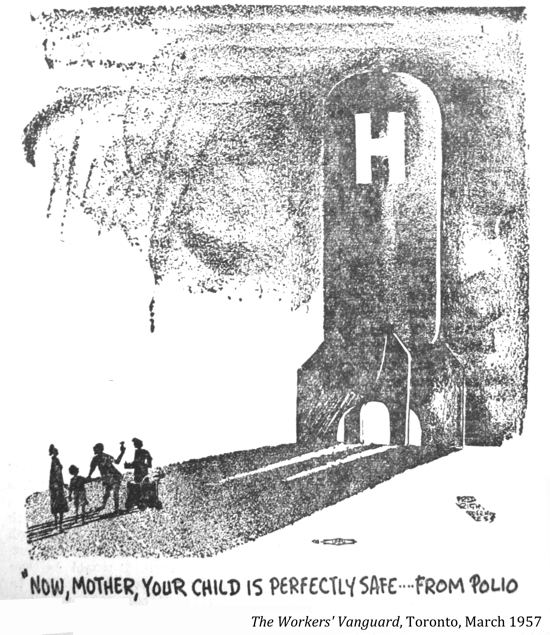


McGill Daily, Montreal, 24 November 1958

L'Aiglon, Thetford Mines, 22 November 1963

McGill Daily, Montreal, 23 October 1964

Ontario Ministry of Health, LAC Acc. No. 1978-29-344
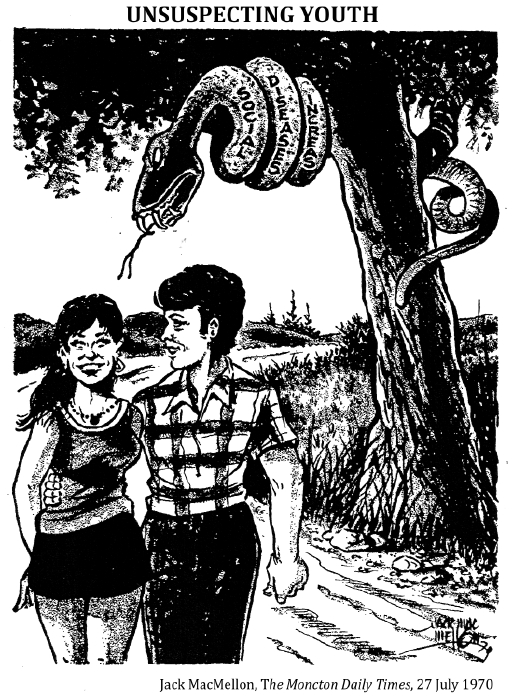

The Peak, Burnaby, 8 November 1972

The Globe and Mail, Toronto, 5 October 1981



The Lance, Windsor, 15 March 1993

|





































%201866-1933%20artist%20Public%20domain%20via%20Wikimedia%20Commons.jpg)














.jpg)



%20%20%20William%20James%20City%20of%20Toronto%20Archives%20via%20Wikimedia%20commons.jpg)











































